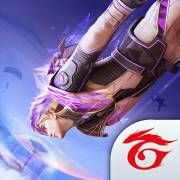Description
A thrilling “Tolkienized” open-world high fantasy adaptation of Dark Souls? Maybe.
Nothing more or less, Elden Ring was exactly what I had anticipated it to be. The length of the game’s trailers didn’t exactly leave much to the imagination, but this is not always a bad thing given that Hidetaka Miyazaki is in charge of From Software. It is a thrill to see a game live up to what the creators initially promised, especially given how these recent gaming generations have been tainted by unwarranted hype and false expectations.
We would have to mention a few noteworthy flaws that have already been mentioned by almost all reviews on the planet, such the game’s terrible PC version performance that has yet to be fully fixed after months of release. Unfortunately, From once again demonstrates its preference for consoles.
Anyway, moving on to a different subject, a frequent query in these circles is: Is Elden Ring an open-world Dark Souls 3? I’d say “not quite” in response.
There are many characteristics and tropes that those two games have in common, including the same graphics engine, general gameplay mechanics, stunning landscapes, “bonfires” (referred to as “sites of grace” in the game under review), and even Patches (the persistent trickster that annoys the hell out of you in every Soulsborne game), but the similarities sort of end there.
The majority of the time, Elden Ring’s world—the Lands Between—is vibrant and beautiful. Given that R.R. Martin, of Game of Thrones renown, was involved in the design of the lore and that he is a Tolkien enthusiast, that alone should explain the “Lord of the Rings” vibe that this game exudes.
Kingdom of Lothric from DS3 is noticeably darker, gloomier, and more opaque. The color design is monochrome, which blends in beautifully with the game’s mythology but can also get monotonous and uninteresting after a while.
Elden Ring also introduces us to a sizable open world filled with a variety of places to explore and hidden dungeons and locales (even a full underground map!). The inclusion of it in a From Software release makes it the first of its sort.
The Soulsborne games up until this point have gotten us used to mostly linear stages with the appearance of an open world. Using a layout akin to Metroid and Castlevania game levels, the first Dark Souls perfectly executed this semi-open world approach, but you were still left with the sensation that you were really moving along a very long and complicated hallway.
With only a handful of branching pathways to choose from, Dark Souls 3 was far more upfront about its linearity. With the exception of a few spots that could only be reached after defeating specific bosses, there aren’t many hints in Elden Ring regarding where to go and what to do. As a result, you have almost complete freedom to explore and travel wherever you wish.
This game’s visuals significantly outperform the previous Soulsborne game. It is a long needed enhancement that the lighting is not as “baked in” as it was in Dark Souls 3. Instead, shadows are cast dynamically. This implies that an object will throw a shadow on all things below it or on the soil at the same angle when light strikes it at a particular angle.
Speaking of the world, it has a strong sense of life, despite the fact that there don’t seem to be any people to engage with in it (which is understandable given that we’re playing in a decaying planet). We warmly welcome the addition of weather effects, a plethora of flora and animals, and day/night cycles.
The evening images did not impress me, which may sound nitpicky in relation to the day/night cycle. There are a few redeemable elements scattered about, but overall I get the impression that I’m playing in the daytime with a filter on it rather than the “real” night. I am aware that the presence of a large luminous tree and a large moon helps to explain this, but I would still prefer it to be a little bit darker.
Editor’s Review & How To Play
Elden Ring is an open-world, third-person video game that is located in a high-fantasy setting. You assume the role of a “Tarnished,” a person who fell out of favor with the Erdtree and was as a result exiled from the Lands Between, a kingdom that its god had abandoned and that as a result had descended into chaos.
The first NPCs you encounter with strangely give away your goal right away: “Become the Elden Lord.” Even so, little is said about your intentions or the specifics of the story. As with every Soulsborne game, the narrative is subtly conveyed through cryptic dialogue and numerous item descriptions. For the sake of immersion, From Software also uses environmental storytelling.
The game’s opening is substantially scripted. You begin playing as your own unique character in the “Chapel of Anticipation,” where you’ll first encounter The “Grafted Scion,” a significant mini-boss. Although it’s theoretically feasible to defeat this boss on your first attempt (so far, I haven’t), you’re initially expected to perish in this encounter.
After that, you’ll pass out in the Stranded Graveyard, which has a tutorial area (with a mini-boss) that can be unlocked if you leap off a ledge adjacent to a ghostly-appearing NPC and another area behind a fog wall that can only be cleared with a unique artifact called the “Stonesword Key.” The environment is yours to explore and be amazed at as you go closer to the elevator and open the main gate. You’ll be given a horse named “Torrent” early on in the game, which allows you to travel great distances while avoiding unpleasant encounters.
You’ll find the first “Site of Grace” next to a strange NPC named “Varre,” who will explain ideas like “grace” and reveal your first location, which is Stormveil Castle, where you must kill a Demi-God named Godrick the Grafted in order to obtain a Great Rune, which will enable you to join the “Roundtable,” a group of formerly renowned warriors who can provide you with goods and services as well as other benefits. Additionally, this obnoxious jerk will remind you that you are “maidenless” (mind your own business!).
You’re essentially on your own from this point on. and you’ll need to make a sensible path choice. Similar to Dark Souls 1, Miyazaki will frequently mislead players into believing that they must defeat the first field boss they encounter or that, after leaving the Stranded Graveyard, they must first battle the enormous boss guarding Stormveil Castle (Margit, the Fell Omen) (technically, it’s doable, but you ought to “get gud” first).
However, you’ll quickly learn to scan your surroundings for tools that can help you in battle and improve your gear. Additionally, you can level up via the menu on the Site of Grace. As you get ready for the next major battle, you can spend the runes (also known as “souls”) that you loot or get from defeated opponents on stat upgrades, equipment purchases, and purchases. In this way, the game promotes discovery and completing side missions.
If you’ve played the previous Soulsborne games, you are familiar with the gameplay. You have a dodge button, a block button, and a “parry/special attack” button in addition to the standard light/heavy attach scheme. Special attacks are tied to a certain “Ash of War,” a piece of equipment that gives a weapon a variety of magical or physical traits and/or powers.
Additionally, a separate jump button is now available. We no longer need to platform using laborious finger-stretching combinations. I understand that the limitations of level design led to the weak leaping mechanics of the earlier Soulsborne games, but they could have easily preserved the weak jump and just assigned it to a specific button.
Finally, it needs to be emphasized that this game is challenging and harsh. You have to be careful with every button you hit in this game, much like in the other Dark Souls games (including Demon’s Souls), Bloodborne, and Sekiro. Given your stamina restrictions, button-mashing is not something you should do. Even when battling small adversaries, each unnecessary button click could result in death during the most important parts of a battle.
Some might point out that this game is fair despite being challenging. this, at least generally, is true. The unpredictable behavior of some monsters and the frantic, impossible-to-telegraph combos, which get mind-bogglingly absurd with late-game bosses, are my main complaints (this also happens in Dark Souls 3 by the way, but I digress.)
I also wish I could have performed combos like some of those chad monsters. Why can’t I, for a change, be in charge occasionally? I’m not asking for an easy mode, but it gets old feeling perpetually weak even after taking out formidable foes. Sure, you can employ the aforementioned Ashes of War, but other than on a few rare occasions, I frequently find myself underwhelmed by how well they work in combat.
Elden Ring nevertheless managed to surpass my expectations despite that final outburst. Given all the gaming-related letdowns I’ve experienced over the past ten years, I must admit that I’ve become immune to hype, but even so, I was pleasantly surprised by this result. Elden Ring is without a doubt one of the best games I’ve played this year, and it will likely maintain this ranking for the rest of 2022, despite the fact that it is probably not the best game ever.
How are you doing, Tarnished? Have you at last attained the Elden Lord title? Leave a comment below if you did or if you’d want to share your ideas!

















